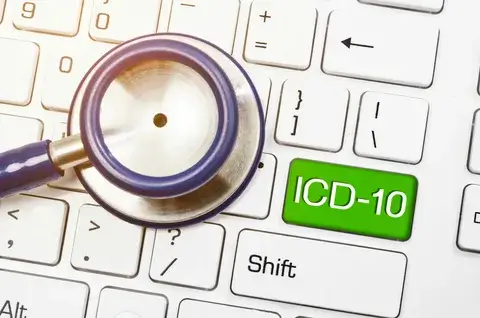The Department of Health and Human Services (HHS) precluded ICD9 coding on October 1, 2015, due to never resolving permanent issues with it. HHS replaced ICD9 with ICD10, which resolved and addressed issues people faced in the former coding.
This shift can lead to a much-anticipated query, what’s the difference between ICD9 and ICD10? ICD10 codes are not only better, longer, and more efficient, but they are also complex, precise, and more changed in terminologies giving out more details than those of ICD9.
Major thanks to the technologies that saved precious hours and developed these codes that can deliver tons of info in seconds, but the shortcoming is that many healthcare professionals, including experienced and rookies, may find these codes confusing and can create a fuss between service providers and payers.
To help dust off these confusions and vagueness, we have outlined a differentiating guide between these codes below.
What is ICD Coding?
To understand both codes, you first need to get the hang of what ICD coding is. ICD (International Classification of Disease), as the name suggests, provides an approach to insurers to identify diseases, injuries, and causes of death of patients.
To facilitate international study on illnesses, their causes, and potential therapies, the World Health Organization (WHO) publishes the International Classification of Diseases (ICDs).
Each medical condition, symptom, or treatment has its own unique set of letters/or numbers known as a “diagnosis code.” Infections caused by the Coronavirus are labeled COVID-19 (Infections due to SARS-CoV-2). The CDC (Centre for Disease Control) officially approves instances before assigning codes. The codes are also sorted in order of their respective expressions.
The first set of codes, ICD9, had issues with it that caused inaccuracies and inefficiencies in many instances; therefore, HHS and WHO mutually eliminated and disqualified this set and introduced ICD10.
Introducing a new set of codes caused and still confusing concerned professionals. However, the difference between ICD9 and ICD10 are not very intense, just some changes that eliminated inaccuracies and ran efficiently. Let’s find out the significant differences between them.
Brief Overview of ICD Diagnosis Codes and ICD Procedure Codes
Due to its reliance on antiquated technologies, ICD9 was unable to account for advances in medicine. In contrast, modern technology is more easily integrated into ICD10. As an added bonus, it provides more leeway for generating and integrating new forms of code.
The new set of codes, i.e., ICD10, has differences in its diagnosis and procedure codes, which are given below.
Difference Between ICD9 and ICD10 Diagnosis Codes
| ICD9 | ICD10 |
| It has a maximum approximation of 13,000 codes. | It has a maximum approximation of 68,000 codes. |
| Its range of code length is 3 to 5 characters. | Its range of code length is 3 to 7 characters. |
| The first digit can be either alpha or numeric. | Its first digit is always alpha. |
| It has limited room for the addition of new codes. | It has more flexibility when it comes to adding new codes. |
| Its codes lack details and are short. | Its codes indicate more details and are more specific yet precise. |
| Its codes lack laterality | Its codes have laterality |
Difference Between ICD9 and ICD10 Procedure Codes
| ICD9 | ICD10 |
| The maximum code approximation was 3000 codes | The maximum code approximation is 87000 codes |
| Maximum code length range was 3 to 4 characters | Minimum code length is 7 characters |
| Its codes always had numeric characters. | Its codes have alpha-numeric characters. |
| This used to feature body parts in generic terms. | This now features a detailed description of anatomical parts. |
| Its definition of procedure lacked precision. | It provides detailed procedures and other details. |
| Its procedural approach always lacked details. | It provides a detailed approach to procedures. |
| The methodology of ICD9 procedure codes’ descriptions lacked details. | ICD10 gives a detailed methodology of descriptions. |
Character Length
Adding additional codes is impossible since several chapters in ICD-9 are already at capacity. A more significant number of codes may be used since the length of ICD-10 codes increases. The use of ICD-10 will allow for a great deal of future expansion.
Compared to ICD9, which only had 13,000 procedure codes, ICD10 contains 68,000, making it 19 times larger. The ICD10 coding system contains 5 times as many diagnostic codes as the ICD9 system. It also includes safeguards to ensure that new illnesses and treatments are included in the system when discovered and developed.
Detailing and Specification
Because of its improved precision, ICD-10 solves problems that plague diagnosis and treatment under ICD-9.
For example, the ICD-9 code will not specify whether the patient’s left or right leg is being treated for burns.
The same ICD-9 code is provided if the same patient is to be attended for a burn to the right leg. Distinct codes for the left and right sides of the body are used in the ICD-10 system of medical billing.
The specificity of ICD10 codes has increased. Compared to ICD9 codes, this is a significant improvement made by ICD10. An accurate ICD10 classification may assist in accurately pinpointing the cause, severity, anatomical location, and kind of event. This implies that the diagnosis, treatment, and results may all be identified using only a single code.
Room for Combination Codes
Since ICD9 does not allow for combination codes, various operations that need independent coding should be specified under individual procedures. ICD10 makes it simple to provide exact descriptions. Accurate descriptions of even very technical medical operations are possible.
Conclusion
While it’s true that the first years of the ICD10 shift would be time-consuming, it’s also important to understand that careful, thorough medical billing will go a long way toward easing the burden.
The payers will not accept claims that do not have ICD10 codes. Yet, it’s equally important to understand that the rate of rejections may be drastically reduced by switching to ICD10 codes. In other words, the doctor’s income rises as the number of rejections decreases.
Related Articles:




